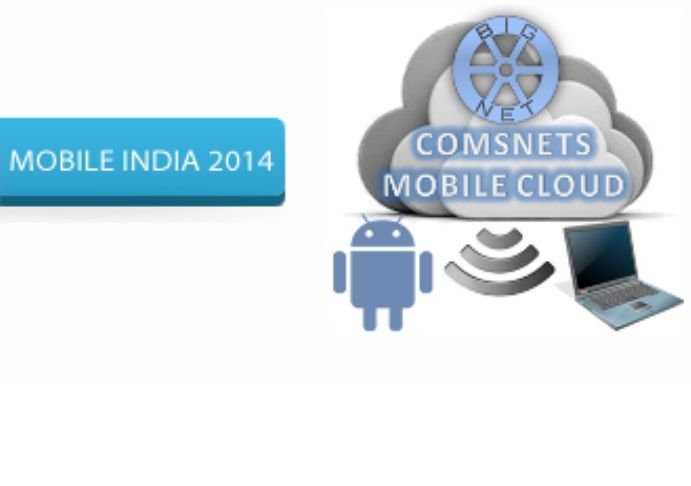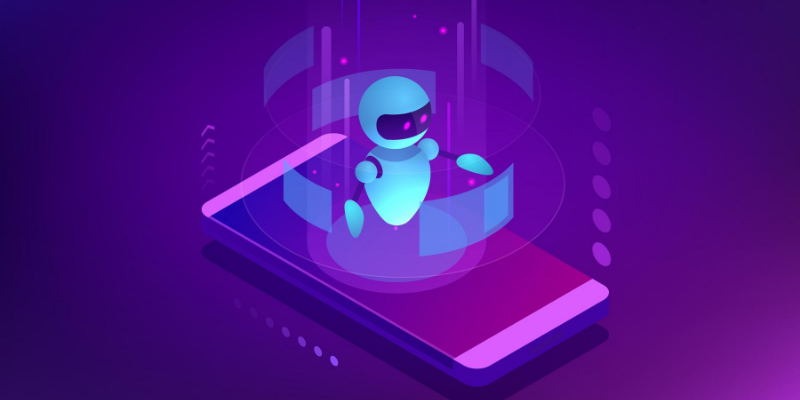Top trends in enterprise mobile: predictions from Mobile India 2014 conference

The Mobile India 2014 conference to be held in Bangalore on January 10 is regarded as the ‘curtain raiser’ event for the mobile industry.
The themes of the conference this year include ‘SMAC’ (Social, Mobility, Analytics and Cloud) for consumer and enterprise segments. The conference is part of a larger industry gathering called COMSNETS 2014, the 6th International Conference on COMmunication Systems and NETworkS.
YourStory.com is the online media partner again for the event, and I look forward to chairing the panel on mobile social media. There is also an insightful panel on enterprise mobile, and I asked some of the other speakers for their predictions on the key trends of enterprise mobile in 2014. Here are some of their inputs; more details can be gleaned by actually attending this broad-ranging mobile event!
Ramesh Adiga, AVP & Head, Global Delivery, Enterprise Mobility Unit, Infosys
The integration of social networks on the move, the analysis of massive Big Data that is generated by such social networks and provisioning of associated services over cloud have been gaining momentum. In India, the subscriber base of Facebook and LinkedIn together has surpassed the100 million mark; and the mobile internet user base has surpassed 140 million.
These two phenomena generate a huge amount of data and a potential user base for myriad applications in the areas of enterprise, education, healthcare and government programmes. At the same time, it also gives opportunities for niche companies in the area to provide Big Data and analytics support to personalise these services towards individuals and organisations. Here are three trends to watch in the coming year.
While we saw the introduction of new devices that along with mobile create a whole lot of new experiences and indulgences for consumers in 2013, the year 2014 and 2015 would be tested for adoption of these by consumers across the globe. The innovators, enterprises and tech enthusiasts should watch this space very keenly and try to create new uses case to attract, engage and expand the consumer base. Healthcare, home and office management, connected vehicles, and innovative consumer products are some of the industry segments to watch.
Mobile device proliferation in enterprises has changed the way IT is being planned, strategised and prioritised. Most enterprises are not only using this ‘new toy’ to innovate and support their business processes but also looking at new ways of engaging with the stake holders. This is placing a huge pressure on IT organisations in terms of application creation, application distribution, application management and governance. The mobile channel is increasing the load on the system by transforming the IT systems from being system of records into systems of engagements. A few key considerations that are being mulled are:
BYOD and associated governance, security and policies creations; global mobile application creation, distribution and management; crowdsourcing of apps within enterprises; agile development of apps.
Enterprises are looking at the mobile channel as a whole new paradigm and the shift is happening quickly. The innovations have a time limit of six to 12 month and need to be immediately adopted. While there are companies which are defending their business using mobile as a channel by extending the business process to mobile, some are extending the business by creating additional value. There are also innovators who are creating products and services in an entirely new way and thereby dis-intermediating business. Key areas to observe are: cards and mobile payments, micro financing, education and learning, healthcare and mobile commerce.
Madhwesh Kulkarni, General Manager, Advanced Technology Solutions, Wipro Technologies
Mobile cloud enabling complex business processes for enterprises is not as easy as it appears. Creating a mobile user app is easy but stitching the pieces of a business process together is certainly not a simple task. A multitude of infrastructure/application platforms, security issues, application integration and performance issues are just a few of the challenges. Also, end to end business process management for an enterprise needs an ecosystem of partners to be glued together. Someone has to bell the cat! Cloud service brokers (CSBs) will play a crucial role here.
Gartner predicts that 45% of cloud traffic will flow through cloud service brokerages. Emergence of CSBs will be key to increased adaption of cloud-based services - especially for smaller enterprises who do not want to invest in their own private clouds yet need the comforts. Telecom operators will be keen to position themselves as CSBs. Emergence of CSBs in India will take a bit longer as the business cases are not attractive enough though almost all leading telecom companies here in India are taking the plunge.
As more new generation devices become internet and mobile ready, M2M penetration is increasing. More and more businesses are now willing to experiment with business process automation with M2M. Cloud based M2M application platforms are providing a launch pad for enterprises to surge ahead in the hope of creating a differentiator for their products and services. M2M has the potential to disrupt the way the services are delivered and redefine the customer interaction. Most enterprises are also looking for M2M based analytical insights to help them in product life cycle and customer life cycle management. Moving beyond the basic analytics in to M2M enabled customer experience management is something one can look forward to.
Enterprise willingness to move their core business processes to cloud enabled platforms and their reluctance to increase capital expenditure budgets is creating an opportunity for system integrators and service providers to offer “business process as a service” in many domains. Cloud based multi-tenant application platforms provide the foundation for scalable yet cost effective business services. As cloud based systems further shrink the distance, business services can now be delivered from anywhere in the world with minimal risks. BPaaS allows customers to transform themselves quickly with minimal capex and also provides an opportunity to shift gears rapidly as the business evolves. Innovative IT service providers are also using this opportunity to penetrate into core business processes.
Manjunath M. Gowda, CEO, i7 Networks
1. BYOD /BYOA (CITE) will become mainstream; “power in your pocket” is a lot more powerful than what is given by the enterprise. This will be a huge disruptive force pressurising CIOs to adjust fast.
2. BYOD (mobile) security will be a huge concern as major mobile enterprise breaches will happen frequently.
3. Host-based mobile security solutions for BYOD become very ineffective due to jammers.
S.R. Raja, Founder President, MobileMonday, Bangalore
1. New enterprise software developed ‘mobile first’ will become a key activity for ISVs and enterprises at large. It will not be just about migrating a few screens and going mobile. It will be about all new workflows developed fresh. There will be tighter integration of new mobile middleware infrastructure with specific enterprise software.
2. Unified communication will see a resurgence on top of Android and iOS. What one has seen hitherto in traditional enterprise environments will move over to mobile and will see its maturity curve rising.
3. Mobile governance frameworks will finally find footing with enterprises as service delivery and consumption becomes more formal, as above.
Shreekanth Joshi, Vice President, Cloud Practice Head, Persistent Systems
1. Mobile apps will become easier to create. Progress in platforms, browsers and device capabilities means creating task specific applications will be highly commoditised. Citizen developers will create DIY version of applications that will consume the large amount of APIs and data formats in the cloud.
2. Mobile handset manufacturers will run out of new ideas and features. After trying to pack the mobile with everything imaginable and increasing the compute capability of the devices, there will not be new features. Manufactures will start turning to more software to try to create value-adds. We could see the start of PC style commodity consolidation in mobile.
3. Interactive capabilities will be in demand. The ability of the device to interact with the environment will provide better functionality. A good example is the mobile acting as a gateway and mediating information from sensors in the environment or detecting when there are active surfaces on which to project information.
Ajayan Narayanan, Senior Director, EMC Software and Services India
1. Mobile First! Enterprises will be forced to adopt a ‘mobile first’ policy due to increasing demand for a 'consumer grade' experience from internal users. 'Mobilising' existing legacy applications also will be a huge challenge for CIOs. New vendors will emerge in this space or existing leaders will offer significant capabilities to address this challenge.
2. Defacto language: JavaScript.
JavaScript will emerge as the predominant language for developing mobile apps. Some amount of re-skilling of enterprise developers will happen. Responsive UIs will become the norm. The apps will be consumed more through palm sized mobile devices than tablets as users may not like to carry more than one device.
3. BYOD will evolve to BYOI (Bring Your Own Identity ). Users’ identity will be less entrusted to third parties and increasingly be something closely held and managed by individuals – as closely as they hold their own devices.
Follow YourStory’s research director Madanmohan Rao on twitter at http://twitter.com/MadanRao











